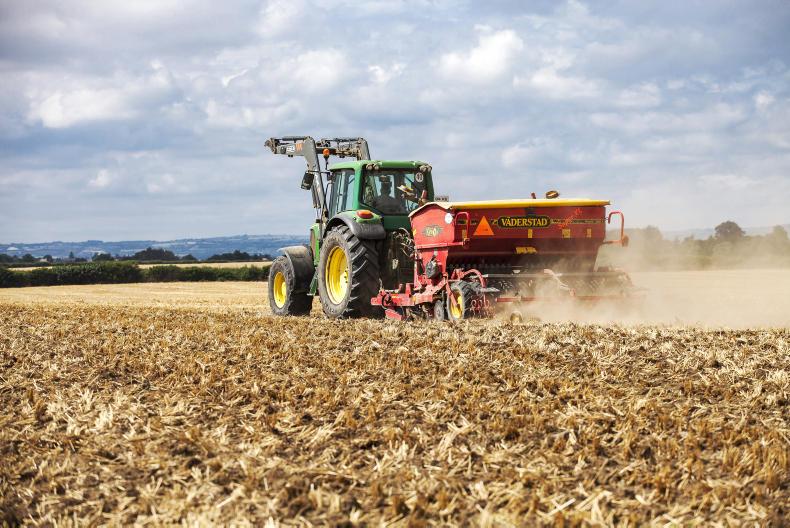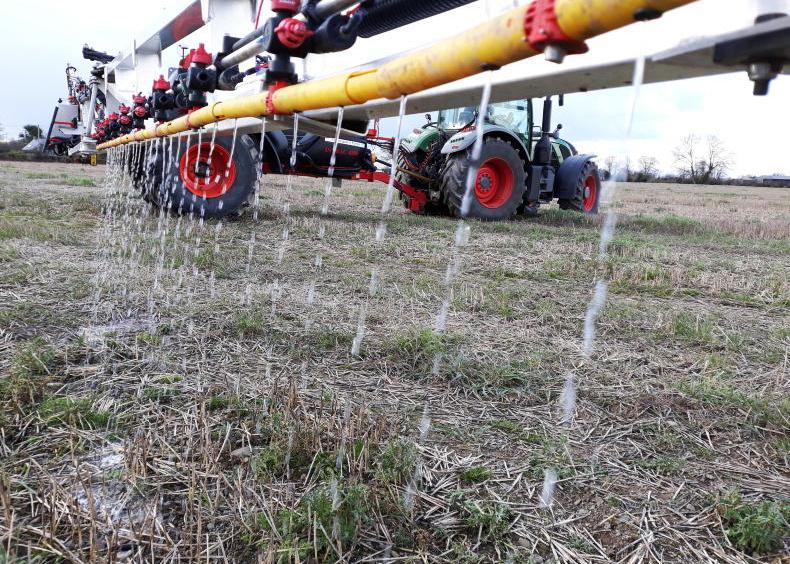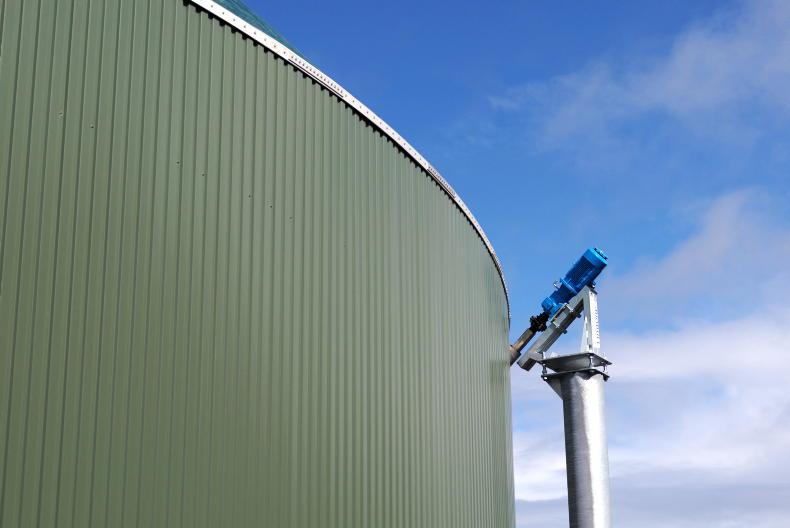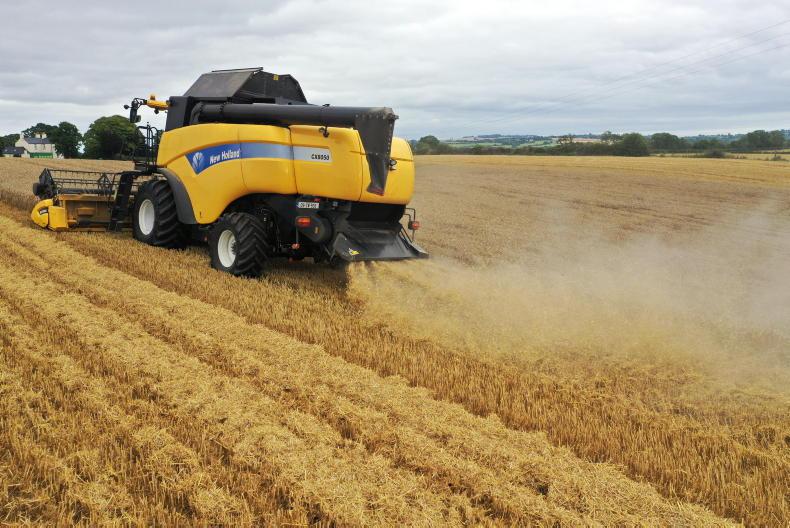In order to address climate change, 197 countries signed up to the Paris Agreement which seeks to keep global temperature rise this century below 2°C above pre-industrial levels.
The EU has also set greenhouse gas (GHG) emission reduction targets, with Ireland tasked with a 30% reduction to be achieved between 2021 and 2030.
Why are these climate targets a challenge to Irish agriculture? Agriculture accounts for one-third of national GHG emissions.
However, the vast majority (over 90%) of these emissions are generated from livestock production, where methane from enteric fermentation comprises the bulk of emissions.
GHG from arable agriculture, on the other hand, is dominated by nitrous oxide from nitrogen (N) application to soils and CO2 release from soils.
The carbon footprint of crops
The carbon footprint of crops (GHG emissions per kg of product) is generally substantially lower than for livestock-sourced products, such as meat and milk. This is because arable systems are more nutrient-use-efficient and also do not produce methane.
The carbon footprint of wheat and barley is the equivalent of 0.3kg to 0.4kg CO2 per kg of grain, compared with 13kg to 19kg CO2 per kg meat (beef or lamb).
The majority of these emissions (80%) are associated with the manufacture and application of mineral fertilisers.

In tillage systems, if straight urea is being used, replacement with protected urea will eliminate N loss as ammonia and is advisable.
However, GHG emissions are highly dependent on previous land use. If land has been in tillage production long-term (>30 years), no soil carbon is assumed to be lost.
However, if grassland is converted, CO2 emissions from breakdown of soil carbon can be substantial (3.5t to 8.5t CO2 per year over a 30-year period).
Management options to decrease GHG emissions in croplands
Cropland soils generally store less soil organic carbon (SOC) than grassland because cropland suffers greater disturbance from cultivation, a lack of organic manure being returned to the system, a winter fallow period and, as a consequence, has less root and shoot material returned to the soil.

The application of lime as a soil conditioner and specifically to neutralise soil acidity and raise pH to an agronomic optimum level.
Importantly, changes in soil organic carbon are not linear and reach a new equilibrium over time (Figure 1). In other words, accumulation of SOM/SOC is finite.
Also, N management will play a key role in reducing crop emissions. Specific management measures of benefit relate to:
Cover crops/rotations: crop rotations that include cover crops, perennial grasses and legumes that maximise soil carbon inputs and maintain a high proportion of active carbon will help build up soil organic matter. Straw and manure incorporation: straw incorporation increases SOC, as organic matter is directly inputted back into the soil. 
Figure 1: Impact of grassland conversion to cropland and subsequent impact of management on soil organic carbon. RT = reduced (i.e. minimum) tillage.
Figure 1 shows that for 4t DM straw/ha incorporated over 20 years, a 7% to 17% increase in SOC (top 15cm only) has been observed (depending on whether reduced tillage was also applied). Slurry and manure inputs will also build SOC stocks and reduce the need for N, P and K mineral fertiliser (see Table 1).
Reduced/minimum tillage: the concept of reduced tillage is that aggregates are disrupted less, leading to reduced SOC loss. However, while SOC levels in the top 30cm are increased, there is increasing evidence that ploughing may simply redistribute SOC over a greater depth profile. However, minimum tillage can reduce fuel usage, as well as improving the structure and water-holding capacity of the topsoil.Fertiliser type and management: nitrous oxide emissions from grassland systems tend to be higher than for arable systems per unit of N applied. This is due to the fact that soil N cycling in grassland is dominated by the denitrification of nitrate to either nitrous oxide (N2O) or nitrogen gas (N2), which results in high levels of N2O. Soil N cycling in arable systems, on the other hand, is dominated by nitrification of ammonium to nitrate. This can result in lower N2O per unit of N applied, but can lead to high levels of N leaching. As a result, advice on changing fertiliser type is different to pasture systems, where moving from CAN or straight urea to protected urea will deliver substantial GHG reduction. In tillage systems, if straight urea is being used, replacement with protected urea will eliminate N loss as ammonia and is advisable. However, research has shown that N2O loss from CAN was not statistically different to straight or protected urea in spring barley systems on free-drained brown earth soils. Greater benefit will accrue by matching fertiliser application to crop requirement. Optimum pH: the application of lime as a soil conditioner and specifically to neutralise soil acidity and raise pH to an agronomic optimum level confers many benefits in terms of crop production, soil nutrient availability, fertiliser efficiency and crop productivity. Pest and weed management: while there are GHG emissions associated with herbicides and pesticides, these comprise of less than 5% of the carbon footprint of crops. Optimised timing and rates of herbicide/pesticide application can result in substantial decreases in carbon footprint by boosting crop yield. Read more
Crops & Spreaders event offers something for everyone
In order to address climate change, 197 countries signed up to the Paris Agreement which seeks to keep global temperature rise this century below 2°C above pre-industrial levels.
The EU has also set greenhouse gas (GHG) emission reduction targets, with Ireland tasked with a 30% reduction to be achieved between 2021 and 2030.
Why are these climate targets a challenge to Irish agriculture? Agriculture accounts for one-third of national GHG emissions.
However, the vast majority (over 90%) of these emissions are generated from livestock production, where methane from enteric fermentation comprises the bulk of emissions.
GHG from arable agriculture, on the other hand, is dominated by nitrous oxide from nitrogen (N) application to soils and CO2 release from soils.
The carbon footprint of crops
The carbon footprint of crops (GHG emissions per kg of product) is generally substantially lower than for livestock-sourced products, such as meat and milk. This is because arable systems are more nutrient-use-efficient and also do not produce methane.
The carbon footprint of wheat and barley is the equivalent of 0.3kg to 0.4kg CO2 per kg of grain, compared with 13kg to 19kg CO2 per kg meat (beef or lamb).
The majority of these emissions (80%) are associated with the manufacture and application of mineral fertilisers.

In tillage systems, if straight urea is being used, replacement with protected urea will eliminate N loss as ammonia and is advisable.
However, GHG emissions are highly dependent on previous land use. If land has been in tillage production long-term (>30 years), no soil carbon is assumed to be lost.
However, if grassland is converted, CO2 emissions from breakdown of soil carbon can be substantial (3.5t to 8.5t CO2 per year over a 30-year period).
Management options to decrease GHG emissions in croplands
Cropland soils generally store less soil organic carbon (SOC) than grassland because cropland suffers greater disturbance from cultivation, a lack of organic manure being returned to the system, a winter fallow period and, as a consequence, has less root and shoot material returned to the soil.

The application of lime as a soil conditioner and specifically to neutralise soil acidity and raise pH to an agronomic optimum level.
Importantly, changes in soil organic carbon are not linear and reach a new equilibrium over time (Figure 1). In other words, accumulation of SOM/SOC is finite.
Also, N management will play a key role in reducing crop emissions. Specific management measures of benefit relate to:
Cover crops/rotations: crop rotations that include cover crops, perennial grasses and legumes that maximise soil carbon inputs and maintain a high proportion of active carbon will help build up soil organic matter. Straw and manure incorporation: straw incorporation increases SOC, as organic matter is directly inputted back into the soil. 
Figure 1: Impact of grassland conversion to cropland and subsequent impact of management on soil organic carbon. RT = reduced (i.e. minimum) tillage.
Figure 1 shows that for 4t DM straw/ha incorporated over 20 years, a 7% to 17% increase in SOC (top 15cm only) has been observed (depending on whether reduced tillage was also applied). Slurry and manure inputs will also build SOC stocks and reduce the need for N, P and K mineral fertiliser (see Table 1).
Reduced/minimum tillage: the concept of reduced tillage is that aggregates are disrupted less, leading to reduced SOC loss. However, while SOC levels in the top 30cm are increased, there is increasing evidence that ploughing may simply redistribute SOC over a greater depth profile. However, minimum tillage can reduce fuel usage, as well as improving the structure and water-holding capacity of the topsoil.Fertiliser type and management: nitrous oxide emissions from grassland systems tend to be higher than for arable systems per unit of N applied. This is due to the fact that soil N cycling in grassland is dominated by the denitrification of nitrate to either nitrous oxide (N2O) or nitrogen gas (N2), which results in high levels of N2O. Soil N cycling in arable systems, on the other hand, is dominated by nitrification of ammonium to nitrate. This can result in lower N2O per unit of N applied, but can lead to high levels of N leaching. As a result, advice on changing fertiliser type is different to pasture systems, where moving from CAN or straight urea to protected urea will deliver substantial GHG reduction. In tillage systems, if straight urea is being used, replacement with protected urea will eliminate N loss as ammonia and is advisable. However, research has shown that N2O loss from CAN was not statistically different to straight or protected urea in spring barley systems on free-drained brown earth soils. Greater benefit will accrue by matching fertiliser application to crop requirement. Optimum pH: the application of lime as a soil conditioner and specifically to neutralise soil acidity and raise pH to an agronomic optimum level confers many benefits in terms of crop production, soil nutrient availability, fertiliser efficiency and crop productivity. Pest and weed management: while there are GHG emissions associated with herbicides and pesticides, these comprise of less than 5% of the carbon footprint of crops. Optimised timing and rates of herbicide/pesticide application can result in substantial decreases in carbon footprint by boosting crop yield. Read more
Crops & Spreaders event offers something for everyone















SHARING OPTIONS